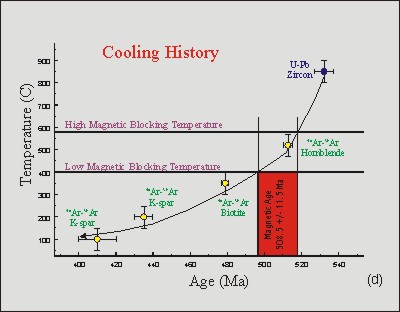
 |
Freethought & Rationalism ArchiveThe archives are read only. |
|
|
#1 |
|
Junior Member
Join Date: Sep 2002
Location: Jackson, MS
Posts: 18
|
I have been trying to educate myself on carbon-14 dating and other forms of dating.. In my reading I have seen that 14C dating is accurate to +/- 10%. What I'm wondering is, if something is dated to, say, 10,000 years old, does that mean that it could be off by 1000 years either way? That seems like a lot, so am I missing something? An object that's supposed to be a million years old could really be off by 100,000 years???
I know that a common creationist argument is that 14C dating is not reliable, so any explanation would be appreciated.. with links maybe  Also, I've read that it is living plants and animals that take up 14C in their respiration cycles, and this is what is being measured for dating. So doesn't this mean that things that were never alive, like rocks, can't be dated this way? Is there another method that is used for rocks and stone tablets and such? Thanks in advance, everyone! |
|
|
|
|
#2 |
|
Contributor
Join Date: Apr 2001
Location: Down South
Posts: 12,879
|
IIRC C14 dating is only useful to 50,000 years. Other methods are used for things in the millions of years
here's some info http://www.nunki.net/isis/isisdating.htm http://pubs.usgs.gov/gip/geotime/radiometric.html http://www.actionbioscience.org/evolution/benton.html I googled "Archaeology dating methods" and got tons of hits |
|
|
|
|
#3 | |
|
Regular Member
Join Date: Jan 2003
Location: glasgow, scotland
Posts: 356
|
Quote:
BY coincidence this subject came up at our church Bible study last night. The following is probably apocryphal but anyway. A professor at Dundee university sent various samples from the same piece of rock to a number of universities for dating. Initially he was surprised to be asked to give his own estimate of how old the rock was. For devilment he gave wildly different dates to the universities but was even more surprised to find that the dates given from all the uni's were within the estimate he had given. The result was that the dating of his rock varied by millions of years. Could this happen? m |
|
|
|
|
|
#4 |
|
Veteran Member
Join Date: Feb 2001
Location: Quezon City, Philippines
Posts: 1,994
|
Sounds like a tall tale to me. Since that's probably the best thing young earth creationists can come up with to counter the radiometric dating techniques, I won't be surprised if this story is widespread among YECs.
|
|
|
|
|
#5 |
|
Veteran Member
Join Date: Dec 2001
Location: Portlandish
Posts: 2,829
|
Seems to me this should be in E/C...
|
|
|
|
|
#6 | |
|
Regular Member
Join Date: Jan 2003
Location: glasgow, scotland
Posts: 356
|
Quote:
There you go pigeon wholing people!! I wasn't trying to make any sort of case out about the age of the earth. I am not from a science background and therefore could not do so anyway. Just wondered if the story could be true or not. From what you are saying it is not. Are you quite sure.................? m |
|
|
|
|
|
#7 | ||
|
Veteran Member
Join Date: Mar 2001
Location: Louisville, KY, USA
Posts: 1,840
|
Quote:
The important point is that the high-temp minerals such as plagioclase will reach closure temperature and will start "counting time" long before the low-temp minerals, such as quartz. Therefore, in a slowly-cooled igneous body, there will be a difference in age depending upon which minerals you date. The differences in age will be proportional to the cooling rate of the igneous body. Joe Meert has a fantastic web article which discusses this phenomenon: Consistent Radiometric Dates. Check out the example of the Carion Pluton in central Madagascar. Particularly, note that when you plot the age of the minerals vrs the mineral's closure temps, it produces a ice cooling curve!  Meert comments: Quote:
|
||
|
|
|
|
#8 | ||
|
Veteran Member
Join Date: Mar 2001
Location: Louisville, KY, USA
Posts: 1,840
|
Quote:
Quote:
Patrick |
||
|
|
|
|
#9 | |
|
Contributor
Join Date: Jul 2000
Location: Lebanon, OR, USA
Posts: 16,829
|
Quote:
A more likely outcome is something like "We found this rock to have age A. Why did you think it was B?" |
|
|
|
|
|
#10 |
|
Regular Member
Join Date: Sep 2000
Location: Pasadena, CA, USA
Posts: 455
|
Radiocarbon Web - All you need to know about carbon dating, from the Waikato and Oxford radiocarbon laboratories.
Radiometric Dating Resource List - The most complete list of web-based resources for learning & understanding the art & science of radiometric dating, at least so far as I know. I created it originally out of frustration at how much time it took to find web resources, and made the list for myself. Then I figured others might find it useful too, and webbed it. As for precision, radiocarbon dates should typically be �1% or �2%. The preliminary dates sent to me, in 1998, for the settlement at Catalhoyuk cluster around 8000�80 uncalibrated years ago. Since then, the calibrated dates I have seen are in the high 7000's of years before present. Last I heard, calibrated radiocarbon dates for the site implied that it was first inhabited circa 8390 years ago, making it the world's oldest city, to the best of my knowledge (Accelerator mass spectrometry dating at Catalhoyuk, E.H. Gokturk, et al., Radiochimica Acta 90(7): 407-410, 2002). |
|
|
| Thread Tools | Search this Thread |
|